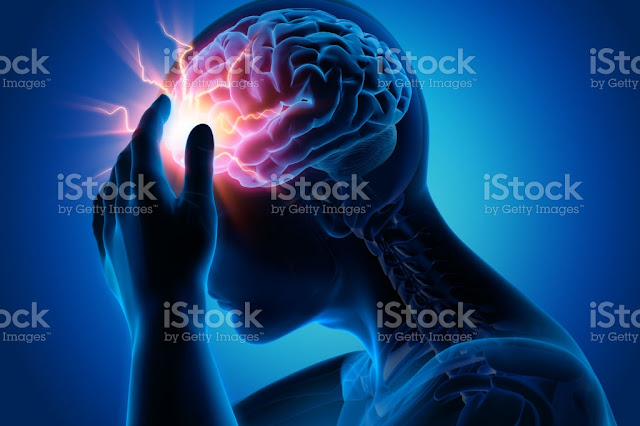Different Types Of Headaches...
Some people have
occasional headaches that resolve quickly while others are debilitating and
painful. The majority can be treated with simple painkillers and will go away
within several hours. However, repeated attacks or certain types of headache
could be a sign of something more seriousness.
There are more than 150
different types of headaches but they are generally categorized into:
1. Primary
Headache:-
- A primary headache is not a symptom of an
underlying illness or allergy. Instead, these headaches result from
problems involving the structures of the head and neck. A primary headache
may be due to over activity of:
- specific areas of the brain
- blood vessels
- muscles
- nerves
- brain chemicals
- common type of headaches include
- tension
- migraine
- cluster
- Headaches can also result from using medication for the
pain too often. In this case, a person has a medication overuse headache,
and this is another type of primary headache.
- They can affect the quality of life. While these headaches are not life threatening, they may be associated with symptoms that can mimic strokes.
2. Secondary
Headache:-
- These are symptoms of underlying medical conditions.
The cause of a secondary headache may be:
- pregnancy
- systemic conditions, such as an infection
- hypothyroidism
- giant cell arteritis
- a stroke
- a brain tumor
- dental pain from infected teeth
- infected sinus
- encephalitis
- meningitis
- hypertension
- Secondary headaches can also result from serious health
issues. It is important to seek medical; advice if any headache:
- is severe or disruptive
- is persistent
- occurs regularly
- does not improve with medication
- Occurs alongside other symptoms, such as confusion,
a fever, sensory changes, or stiffness in the neck.
- For example,
- Sinus Headaches are considered a secondary headache
due to increased pressure or infection in the sinuses.
- Traumatic headaches also fall into this category
including post-concussion headaches.
- Hangover headaches also fall into this category.
People who drink too much alcohol may waken with a well-established
headache due to the effects of alcohol and dehydration.
- Hormonal and exertion headaches also fall into this
category.
- This group of headaches also includes those headaches
associated with substance abuse and excess use of medications used to
treat headaches.
3. Cranial Neuralgias,
Facial Pain, and other Headaches:-
- Neuralgia means nerve pain. Cranial neuralgia describes
inflammation of one of the 12 cranial nerves coming from the brain that
control the muscles and carry sensory signals to and from the head and
neck.
- The most commonly recognized example is trigeminal
neuralgia, which affects cranial nerve V (the trigeminal nerve), the
sensory nerve that supplies the face and cause intense facial pain, when
irritated or inflamed.
The different
types of headaches depend upon the class to which they belong. Some common
types include:
1.
Primary tension
headaches that is episodic.
2.
Primary tension
headaches that is chromic.
3.
Primary muscle contraction headaches.
4.
Primary migraine
headaches with aura.
5.
Primary migraine
headaches without aura.
6.
Primary cluster
headache.
7.
Primary paroxysmal hemicrania (a type of cluster headache).
8.
Primary cough headache.
9.
Primary stabbing
headache.
10.
Primary headache
associated with sexual intercourse.
11. Primary thunderclap headache.
12. Hypnic headache
(headaches that awaken a person from sleep).
13.
Hemicrania continua (headaches that are persistently on one side only, right or left
{unilateral}).
14. New Daily-Persistent
Headache (NDPH {a type of chronic headache}).
15. Headache from exertion.
16. Trigeminal neuralgia and
other cranial nerve inflammation.
17.
Secondary
headaches due to:
o Trauma.
o Disorders.
o Infection.
o Structural problems with the bones of the
face, teeth, eyes, ears, nose, sinuses or other structures.
o Substance abuse or withdrawal.
Different types of
headaches have their own set of symptoms and triggers and they have specific
locations too. Tension headaches, for instance, can affect the whole head.
Whereas sinus or cluster headaches affect a more specific area. If you can
identify the area of your head that hurts every time you get a headache, you
can use the information to work out the cause of your headache and then administer
immediate relief.
SOURCE :
- Photos and Videos-
- https://www.pexels.com/
- Content-
- https://www.medicinenet.com/
- https://www.medicalnewstoday.com/
- https://www.combiflam.co.in/




Wow..Keep it up...
ReplyDeleteVery well written
ReplyDelete